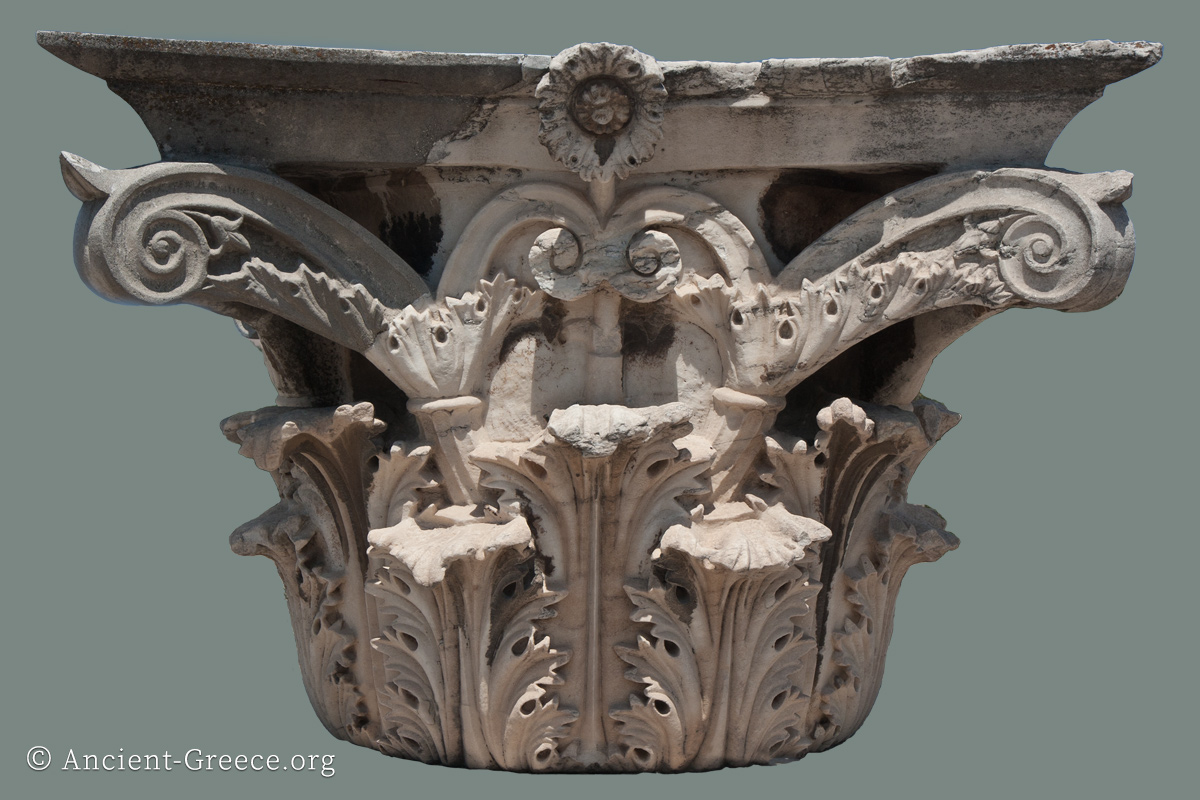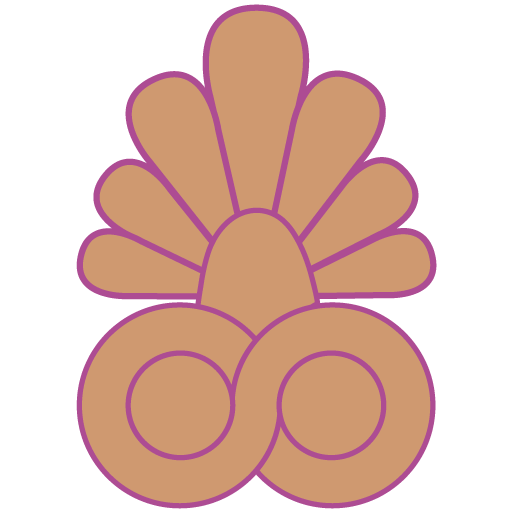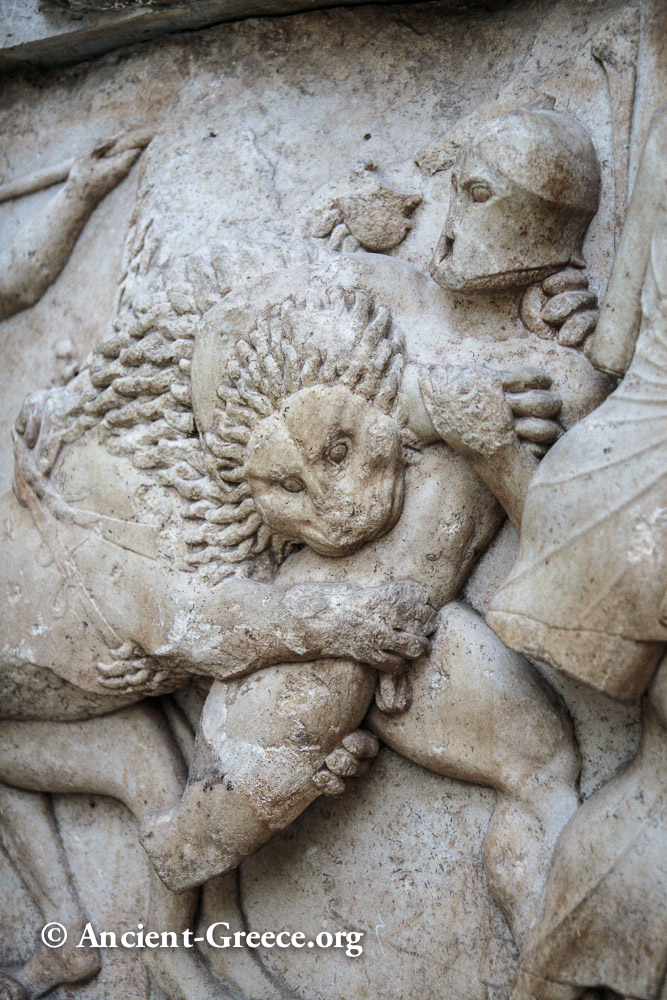
On this page:
The Archaeological Museum of Delphi shelters the wealth of artifacts unearthed during excavations at the Delphi oracle and its vicinity.
It is located adjacent to the archaeological site, and it is one of the top must-see museums in Greece, mainly because of the breadth, quality, and significance of artifacts it exhibits.
The permanent exhibition covers over a thousand years, from the Mycenaean era to the Greco-Roman times.
Highlights of the exhibitions include the Treasury of Siphnos, The Treasury of the Athenians, The Spinx of Naxos, The two kouros known as Kleobis (Cleobis) and Biton, and the Charioteer of Delphi bronze statue.
Exhibition Highlights



Chryselephantine (gold and ivory) statue fragments from the Archaic Era.




The “Charioteer of Delphi” (Greek: Ἡνίοχος, the rein-holder; often transliterated as “Iniohos”) is one of the best known ancient Greek statues, and one of the best preserved Classical bronze casts. It is considered a fine example of the Early Classical, or “Severe” style. 470 BC.


Two identical Kouros Statues. They are the oldest monumental votive offerings at Delphi, and one of the earliest examples of monumental archaic sculpture.
They have been identified either as Cleobis and Biton, the two pious brothers from Argos, or as the Dioscuri whose cult was popular in the Peloponnese. Stylistically, they are an example of the transition from Daedalic to early Archaic art.
Over life size (6.15m) each. Made by Polymedes of Argos. 610 – 580 BCE.





From top left:
Helmet of the Corinthian type. It is decorated with the embossed figures of Europe riding the bull (the bull’s head is visible in this photo), and animal fights. 7th c. BCE.
Bronze cauldron resting on an iron tripod ending in bronze oxen feet. The cauldron and the tripod is put together from fragments belonging to two different units for demonstration and exhibition purposes. 7th c. BCE.
Statue of a bull made with silver and gold. 6th c. BCE
White kylix with a drawing of Apollo. The god is crowned with a myrtle wreath and is seated on a lion-footed stool. He is holding his lyre and pours libations from a phiale, while a crow or a raven watches from a perch. 480-470 BCE.
Bronze votive shield of the “Herzsprung” type (named after the are of northern Europe where such a shield was found). The earliest examples of this type of shield. Late 8th c. BCE.




Left to right:
Bronze statuettes of warriors. 8th c. BCE.
A youth (Kouros) of the Daedalic style. 620 BCE.
Perirhanterion. It functioned as a stand for a basin used in rituals. It consists of three Kore statues around a single column. Early 6th c. BCE
Mycenaean clay female figurines from the sanctuary of Athena Pronaia of Psi type. 1400-1050 BCE.




Left to right:
Large Sphinx of Naxos sitting on an Ionic column about 10m tall. Circa 560 B.C.
Detail of a marble slab from the Athenian treasury with carved musical inscriptions – hymns to Apollo. These are the oldest written notation of a melody.
The omphalos of the earth sculpture. This sacred object was located in the Adyton of the Temple of Apollo, and was viewed only by the priests and priestess who had access to the chamber. It is a Hellenistic or Roman copy of the original . In the background: Dancing girls on the Acanthus Column.
Roof terracotta parts with painted decorations. From various buildings. Late 5th c. BCE.



Metope from Sikyonian monopteros Treasury (clockwise from left): The Dioskouri, Castor with their cousins (the sons of Aphareus), leading a herd of cattle, stolen from Arcadia. Painted inscriptions indicated the names of the figures. 560 BCE.
The abduction of Europa. Zeus, transformed into a bull carries Europa, the daughter of a Phoenician king, on his back. 560 BCE.
Scene from the Argonaut expedition. Orpheus at the prow of Argo along with a musician playing the lyre. One of the shields hanging from gunwales to protect the oarsmen is visible below them, and the Dioscuri disembarking on horseback are on the left.




Details from the Athenian and Siphnian Treasuries at Delphi. Early 5th c. and 525 BCE respectively.
From left to right:
Heracles and the Ceryneian Hind metope from the Athenian Treasury.
Theseus and Antiope metope detail from the Athenian Treasury.
Gigantomachy detail with a lion biting a giant. From the Early 5th c. BCE of the Siphnian Treasury.
Scene from the Trojan War with Aeneias and Hector against Menelaus and Ajax. From the East frieze of the Siphnian treasury.





What remains from the east pediment of the Archaic Temple of Apollo.
From left to right:
Apollo’s four horses are in the center, flanked by three korai and three kouroi. In the corners lions hunt pray. Parian marble. 510-500 BCE.
Acroterium from the temple of Apollo depicting Winged Victory (Nike). 510 BCE.
The west pediment of the Archaic temple of Apollo. It depicts a Gigantomachy. On the far left is a Giant (probably Enceladus), and on his right the standing figure is Athena. Behind Athena another standing figure is next to the horses of Zeus’ chariot. Stuccoed poros stone; 510-500 BCE.
Fragments of statues from the east pediment of the classical temple of Apollo. It depicts Apollo (far left – seated on a tripod, and holding a branch of laurel and a phiale, symbols of his oracle), Leto, and Artemis among the Muses. Made by the Athenian sculptors Praxias and Androsthenes. Circa 330 BCE.
The west pediment of the classical temple of Apollo. It depicts Dionysus (center) among the Thyiads. Work of the Athenian sculptors Praxias and Androsthenes. Marble, Circa 330 BCE.




Tholos entablature from the sanctuary of Athena Pronaia. It has four metopes with statues depicting the abduction of a female by a Centaur, a seated horse, and a warrior mounting a horse. The metopes were badly damaged in antiquity when they were removed to be used as building material for an unrelated building.
More From the Museum Halls

















